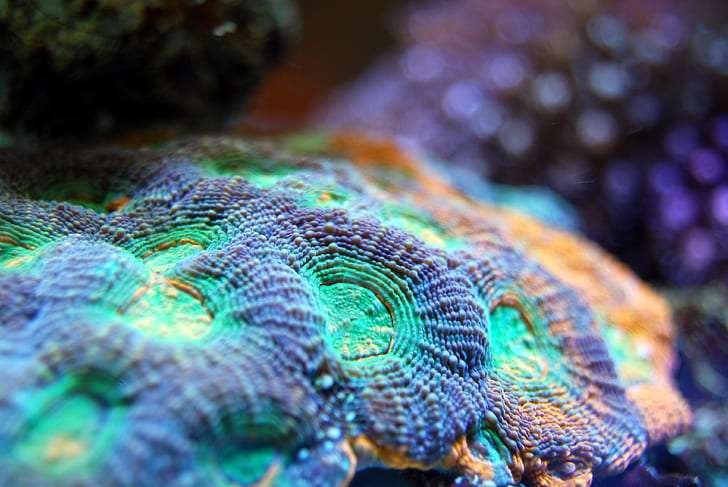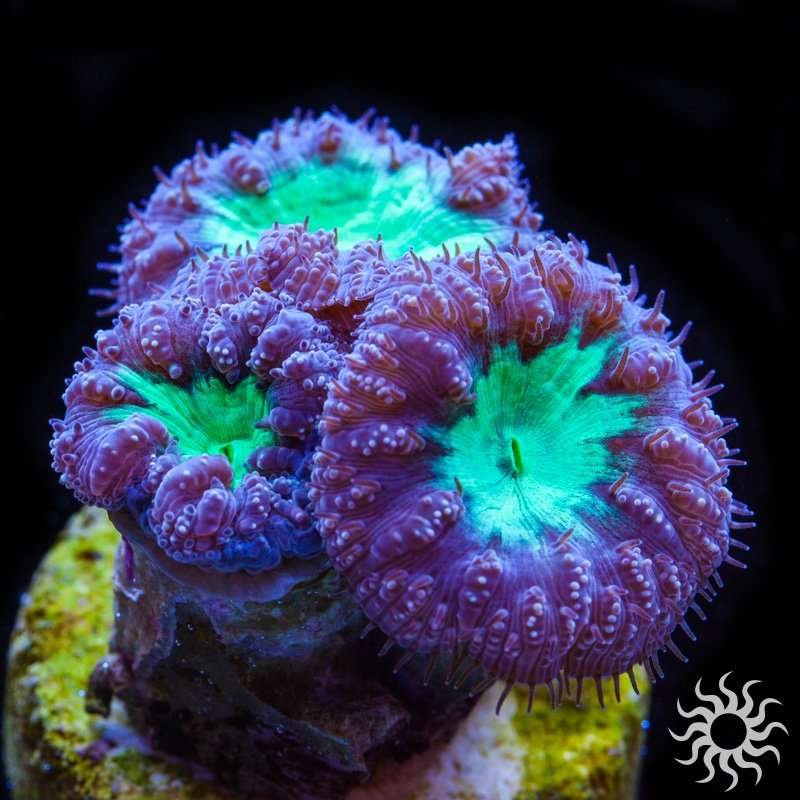Favia Coral

It’s easy to see why favia is sometimes called “brain coral.” Many kinds of Favia coral grow to be round and very big in the wild. The smooth surface of the genus’ corallites (a coral polyp’s bony “jacket”) really does feel like the inside of a brain! They can be a dull brown with green and yellow spots or bright neon colors like blue, pink, purple, red, and orange.
In the wild, Favia can be found in both the Indo-Pacific and the Atlantic. They live in different places and at different depths.
Care for Favia coral
Favia coral is easy to take care of, which makes it a good choice for people who are just starting to keep reefs alive. Whatever kind of coral you have, the most important thing is to keep the water clean. Don’t forget to do monthly aquarium maintenance.
What your Favia coral needs in terms of light, flow, and other things is very different depending on the species. In the wild, the genus lives in a lot of different types of habitats, after all. Because not much is known about how to care for each type of Favia, it’s really just a matter of trying things out.
Most of the time, putting your Favia coral somewhere with medium to high light will work well to begin with. They do, after all, have zooxanthellae and can use light to make food. In terms of flow, they also like that middle range. If the current is too strong, it could hurt your Favia, so don’t do too much.
Don’t forget that corals need space to grow. In the never-ending fight for the best aquarium space, many species use long sweeper tentacles to bother and even hurt their neighbors. You should not put favia coral too close to your other valuable corals because it is very good at this.
LIGHT
A modest amount of light, about 100 to 150 par, works best for LPS corals, but they may be able to handle up to 200 par. That being said, remember that too much light can easily hurt coral. If you want to light LPS corals, we think that less is often more.
WHAT THEY EAT
We don’t think favia corals need a special way to eat. As they take nutrition from the water, they will catch and eat most of the food in the water column. As with most corals, they will do well if you give them enough food. Our method is “high input, high output.” FLOW
Favia corals do best when there is a modest amount of water flow that goes around them. This helps the coral stay clean and brings food to it. Too much flow, especially straight flow, can hurt coral tissue or make it harder for it to catch food.
DOUBLE HARD
Beginner: This coral is a great addition to your sport, and you can find many specimens that have been grown in water. Favia corals usually grow quickly and will do well in captivity for a long time. Not every wild animal can live in a tank, but many amateurs have had long-term success with them. Like all corals, these species do well in captivity if they get the right amount of light, flow, filtration, and food.
TEMPERATURE IN THE NATURE
For most corals, 82 °F (28 °C) is the best temperature, but they can live in temperatures from 77 to 84 °F.
A reef tank should have a pH level between 8.0 and 8.4, and we usually keep it between 8.2 and 8.3 for 24 hours. Try to keep the nitrate amounts between 5 and 10 and aim for them to stay that way. Make sure that the phosphate levels stay between 0.05 and 0.1. A number of 8 to 9 dKh is suggested for alkalinity.


